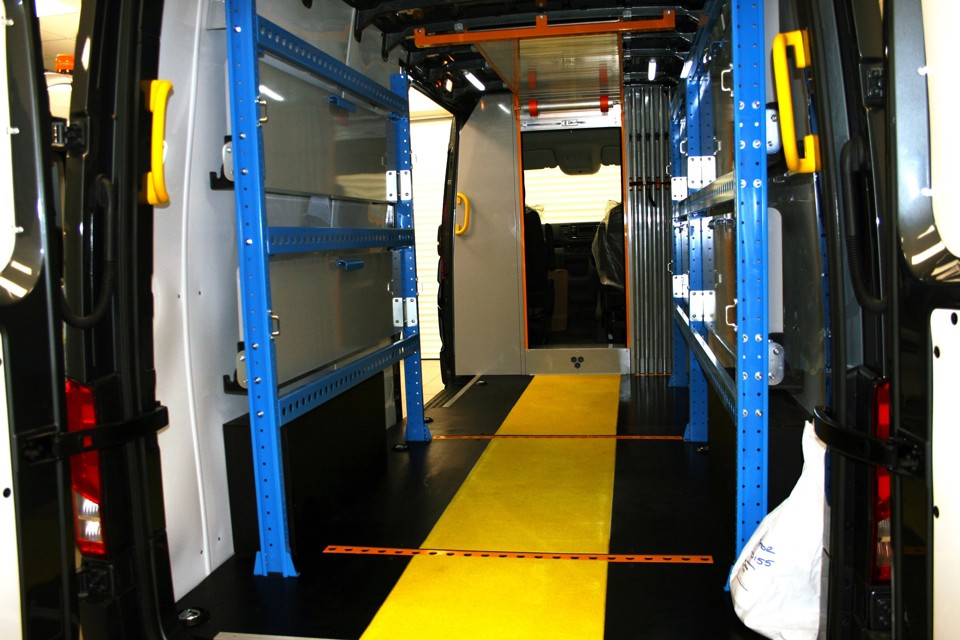The transformation of a standard van or truck into a ready-to-work vehicle involves countless decisions.
While there will be organisations for which an unmodified vehicle will be suitable, in many cases they will need to be customised in one way or another.
This may be in the form of racking in the case of panel vans, to the extremes of tail-lifts, cages and steps for trucks.
And getting it right will have big benefits for the fleet: for example, the right racking solution should boost the productivity of drivers by helping them organise their tools, equipment and spare parts in the most efficient configuration.
In all instances, determining the operational needs of the employees who will be using the vehicle is an ideal first step.
Do operatives need shelves and cabinets, secure boxes for valuable tools and equipment, or a certain amount of floor space for them to carry out their work?
Does an organisation need a welfare vehicle to provide mobile facilities to a team of engineers out in the field?
Many organisations involve a number of stakeholders in the process: from employees who will be using the vehicle on a daily basis, to senior managers who will have a holistic view of the organisation.
Involving drivers should not be overlooked. Even if their suggestions cover what may seem like minor points over the positioning of interior lighting or shelving, they are likely to have operational benefits.
Choosing the right supplier is also key. The right partner should take time to fully understand your requirements and bring innovative ideas to the design to save space, weight and money, as well as being able to draw on their experience of working with other fleets.
Fleets need confidence that any supplier will ensure that whatever is fitted to a vehicle is safe, crash-tested, and will not jeopardise the payload of the vehicle when it is in operational use.
Warranties and aftersales support can also be key considerations, especially as vehicle holding periods are extending.
Costs and the objective of supporting a circular economy are also raising the prospect of fleets redeploying racking equipment from one vehicle to its successor, although the process is not without complications.
For a start, there is the operational downtime while the donor vehicle is stripped before salvaged racing can be fitted in its replacement.
And then there is the uncertain condition of racking at the end of a tough working life, although certain costly components, such as ladder racks, are now being reused.
This is a good example of an area of commercial vehicle conversions which is gaining traction: modifying vehicles to improve efficiency or make them more environmentally-friendly.
These include changing the fuel type, the entire powertrain or fitting a new, more aerodynamic body
Operators are under increasing pressure to reduce emissions from transport and the most obvious solution is to replace vehicles with electric ones.
However, the limitations on range, combined with the significant cost of these vehicles, can make it prohibitive.
For operators with existing diesel vehicles that wish to contribute to cleaner air, while also making savings on fuel, a hydrogen conversion could be a solution.
These systems can be dual fuel, where hydrogen is burned inside an internal combustion engine, in a similar way to liquified petroleum gas (LPG) conversions.
The diesel vehicles are fitted with hydrogen storage tanks, with the fuel injected into the fuel mix when it can burn most efficiently, promising a reduction in carbon emissions of up to 70%.
Another conversion which can also reduce emissions and increase efficiency is to fit lighter and more aerodynamic bodies.





















Login to comment
Comments
No comments have been made yet.